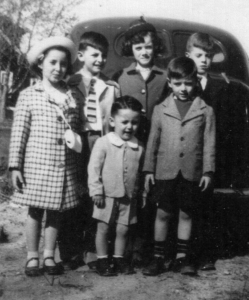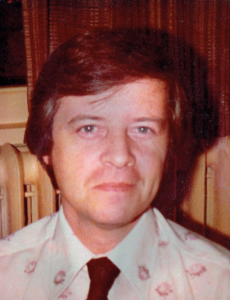“In the Spirit” appeared on Feb. 1, 1987.
In the spirit
Shirley MacLaine Isn’t the only one out on that limb
by Frank DeMarco
I was among those who paid $300 to attend Shirley MacLaine’s two-day seminar in Virginia Beach on “Connecting with the higher self” last weekend. Let me go out on a limb a bit myself: That weekend already has changed my life.
I know, from talking to others, that I was not the only person there who had questioned his own judgment for plunking down $300 to attend. It left many wondering, as the session started, if we had been ripped off. Someone questioned Shirley MacLaine about it, and she said she had struggled with the question of money and had finally set the fee so high in order, as she put it, to eliminate those who “might want to have a spiritual tea party with a celebrity” after reading her book or seeing her recent TV special, “Out on a limb.”
Correct decision. Those who came despite the fee were those who had a strong inner need to be there.
I deal first with the seemingly peripheral issue of money because when I tell someone I attended, the first (usually incredulous) response I get is: “You paid $300?” Which is to say” “You were that gullible?” Well, yes, we were tilling to risk being that gullible. We went not in blind sleep-walking assurance, but in confidence mixed with hope — and hope implies doubt. But doubt was removed — for me at least — before we trooped out again at the first intermission.
These preliminaries dispose of two of the six journalistic questions, when and where. More important are the other questions: who, what, how and why.
Who: What kind of people attend such a seminar? Misfits and failures, surely? Aging hippies? The insecure young, looking for something — anything — to believe? From my own unscientific survey of the 600-some in attendance, these generalizations:
Many were between 30 and 60, with a fair number of elderly but few if any in their 20s. In all age groups, women seemed to outnumber men by at least six to one. Professional people were in abundance, including, among others I met, a management consultant, a fashion designer, a teacher and a real estate agent (though the most impressive was a factory worker). Many had come from considerable distance: I met some from Florida, Pennsylvania, Ohio and many from the Washington, D.C. area.
By a show of hands, about half of those attending described themselves as experienced students of metaphysics; the rest considered themselves beginners. Some had been aware of their psychic abilities virtually from birth, other had acquired (or recognized) such powers over time, and still others were unaware of, or skeptical of, such gifts.
And this is a good place to underline the fact that doubt was not absent among attendees. Many wondered if the mental images produced by exercises in visualization were “just their imagination” rather than an authentic communication rom their higher self (or super-conscious, or racial unconscious, or God, depending on what system of understanding you care to force it into). Exercises with strangers that resulted in startlingly accurate insights into other people’s motivations and fears left some wondering if they’d merely “guessed.” The search for truth proceeds, in metaphysics as in other areas, be perseverance in the face of self-doubt until skepticism is overwhelmed by evidence internal and external.
If this description gives the impression that these were “just folks,” well — that’s about it.
What: Three beliefs central to the seminar are stumbling blocks for those who are not familiar with ancient teachings in both East and West. These are: connectedness (the view that there are no accidents in life); reincarnation (that the soul does not die, but repeatedly alternates between dimensions we see and those we don’t); and the existence and function of chakras in the human body (that the physical dimension is connected to the spiritual in specific parts of the body, the workings of which can be experienced).
On reincarnation and the existence of the chakras, an extensive literature exists, and this is not the place to discuss them. But some thoughts about connectedness and coincidence may be in order.
What do you believe — that life is accident, or that it is a seamless web in which even apparent coincidences have meaning? Western man for hundreds of years has mostly chosen to look at life as a series of accidents: hence, his frantic efforts at gaining control — over others, over matter, over everything but his own being. Hence, today’s superb technology — particularly in warfare — accompanied by spiritual desolation. But the world is not meaningless coincidence.
Sez who? Well, says Swiss psychologist Carl Jung, for one. Jung decades ago coined the word “synchronicity” to describe internal and external events that are linked by time and psychological significance but are otherwise unrelated. (Meaningful coincidences, in short.) He also published studies of alchemy, astrology and the I Ching, the Chinese book of divination, and a book on the UFO phenomena — yet he can hardly be dismissed as a nut, a fraud or a gullible fool.
I cite Jung, not as support for whatever Shirley MacLaine has said or may say, but merely as one example of a towering figure in mental science who saw the world in the same way the participant in the seminar see it: as pattern, not as chance and accident, however it may have appeared to Hampton Roads’ police departments after the roads froze last Sunday night.
How: The mechanics of the seminars included question-and-answer sessions, meditations, explanations and exercises, each activity adding to the experience.
For instance, the first long question-and-answer session helped many to change focus from Shirley-as-the-center-of-the-experience to myself-as-center-or-the-action as the flow of questions moved beyond the material of the book or the TV show to more individual concerns.
But Q&A can be carried only so far. Once it had broken the ice, it was time to proceed to real work. And meditation and visualization — for those who’ve never tried — are real work. As clergymen know, groups engaged in such work together become more than the sum of the individuals involved. And in show-business professional MacLaine, participants had the assistance of a central figure directing the meditation who knew how to employ sound-effect techniques to good advantage to aid visualization.
Her explanations of theory I found a little too long — perhaps because this was familiar ground — and some of her theoretical structure I thought wrong. But the disagreement meant little: As the late economist E.F. Schumacher used to say, it’s amazing how much theory you can dispense with when you get down to doing real work. The real work, for me, were the meditations and exercises, a couple of which were mentioned under “who.”
The seminar had little to do with sitting at someone’s feet to pluck pre-digested pearls of wisdom and much to do with practicing meditations and visualization exercises. The seminar was named, not “Talking about the higher self” but “Connecting with the higher self.” And of the 600-some participants, the great majority, on a show of hands, succeeded in making the connection. About half did so for the first time, among them — to my delight — me.
(Being neither superman nor guru, I am very much aware how exposed this public statement leaves me, and the awareness gives me redoubled respect for Shirley MacLaine’s courage in going public. Even though she lives in California and is of a show-business background – two very tolerant cultures – I suppose that few people enjoy being called kook or worse.)
Questions such as “What did it feel like?” and “How did you know you weren’t imagining it all?” are very natural. But describing the experience would convey neither the reality nor the basis of conviction. Reading about meditation isn’t the same as practicing it. For those interested, the mystical traditions in Christianity and other religions have for centuries provided descriptions of how to begin.
Why: The comments I’ve seen in print on the TV special that aired the week before the seminar seemed to miss the point. What was important was not the construction of metaphysical systems, nor UFOs nor the acquisition of psychic powers. And it certainly had nothing to do with establishing a cult to worship at the shrine of the arch-priestess Shirley. The last thing the world needs is another cult or another instant guru.
What it does need is thousands — millions — getting in touch with their higher selves. Only the experience, not some theory or conviction, can change lives — and our lives need changing.
America, the land of immigrants that became the world in miniature, has for too long placed its faith in technology, in politics, in weapons and in organization. But neurotic, resentful, fearful people cannot construct a better world: We as a society have been approaching the matter from the wrong end. Improve ourselves — heal ourselves — and the systems will improve more or less automatically. And this can only be done as individuals.
Besides — as every religious teacher has known — everything begins within the solitary individual, and each individual human soul is worth more than “world peace” and “social justice” and “progress” and all the other chimeras people organize for, work for, and finally, kill for.
America brought materialist trends to an extreme; it is fitting that counter-movements should first catch fire in this country. Shirley MacLaine has begun one such counter-movement, perhaps the most genuinely democratic yet seen. By helping participants to gain access to their own inner guides, this movement may help thousands to become new centers of spiritual growth. Instead of guru, to whom members abdicate their critical faculties and wills, she is attempting to be the facilitator, “on tap, not on top,” in a one-time experience that shows people how to get out of their own way, then leaves them to do it, and goes on to others.
I shake my head in wonder that I was among those who were there at a meeting which — as a beginning — may prove to have been historic.
I wish all my investments would turn out so well.

